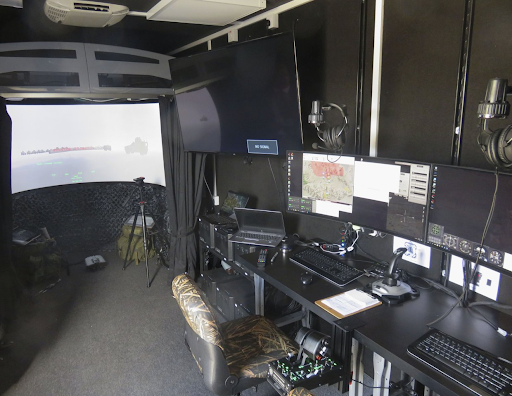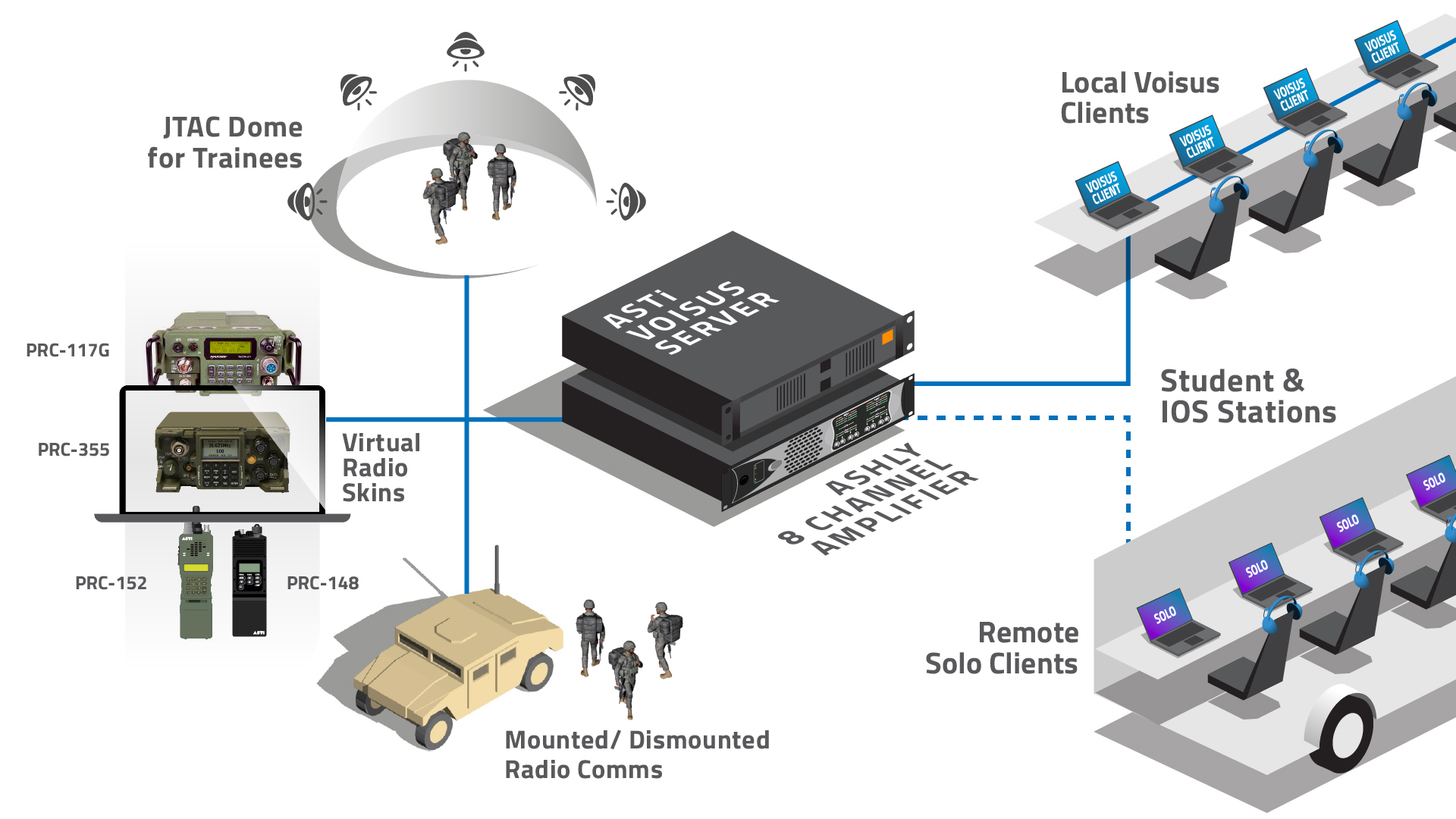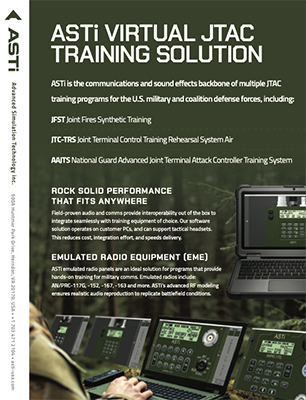Hybrid Software and Hardware Solution for Joint Fires Synthetic Training (JFST)
Customer
U.K. Army
Application
Ferranti Technologies of Elbit Systems UK selected ASTi’s Voisus® product as the communications and sound effects backbone of JFST. This UK Ministry of Defence program encompasses over 15 Army training sites across the UK. It includes networked, fixed, and mobile training systems to train mounted and dismounted Joint Fires teams and cells, supporting exercises for reserve forces and teams deployed at sea. JFST replaces current capabilities of the Distributed Synthetic Air Land Training 2 and Close Air Support Simulator at the Joint Forward Air Controller Training.

Joint Fires Mobile Trainer by Giles Ebbutt
Challenges
&
Solutions
The challenge requirements are listed in blue; ASTi's applicable components are

Joint Fires Mobile Trainer by Giles Ebbutt
Scalable Solution with Compact Hardware Footprint
The customer required a flexible configuration that blends hardware and software platforms, increasing mobility without extra hardware.
The JFST program’s 23 training facilities simulate field and vehicle operations using multiple types of training components. These classroom environments feature a mix of fulldome projectors training field operations and stationary vehicle simulators for mounted operations. Trailers simulating moving vehicles travel from site to site to train dismounted operations. As a result, the customer required a flexible audio and comms solution that adapts to any training environment.
Voisus—JFST’s sole comms solution—provides a critical component that connects trainees in the classroom to teams representing virtual fire support from air, land, and sea. JFST received 21 Voisus servers that centrally manage multioperator configurations. The Voisus servers provide shared comms among the domes and mounted vehicles, linking together a vast network of clients. As a result, operators across all JFST sites can participate in a single, coordinated exercise.
The program supplemented Voisus servers with 18 software-only Solo™ stations, which provide instant comms via ASTi radios. This standalone application adds a level of mobility and flexibility unavailable before. Thanks to a compact footprint with no extra hardware, trailers with Solo stations can travel to remote locations. Soldiers can practice dismounted operations, moving freely around the site while communicating via Voisus clients. Best of all, administrators can add more clients on the fly, making Solo ideal for last-minute stand-up during exercises.
Advanced Radio Skins
The program required updates to existing simulated radio interfaces inside the Voisus client.
ASTi offers custom GUI options for a variety of training scenarios. For the JFST program, ASTi added a new interface for Bowman PRC-355 radios. These updates enhanced the program’s training and operational requirements, providing the real radios’ look and functionality at a fraction of the cost.
Trainees access these radio skins through Voisus clients installed on desktop PCs and Solo laptops. The radio models are configurable for a variety of training scenarios. Users can construct radio presets using standard parameters (i.e., frequency, modulation, frequency hop modes, and crypto fills) for quick and efficient distribution to all radio simulators. They can also create and store multiple sets of preferred exercise configurations for convenient setup and rapid deployment.
Realistic Audio
The system should provide realistic, directional audio inside the training facility and dome for environmental surroundings and synthetic entities.
Earshot, a sound field reconstruction product, monitors the DIS network and automatically provides a 360-degree soundscape of the virtual battle space. To provide realistic timing, Earshot 3D estimates the distance between the listener and the sound, causing a delay based on listener position. Customers can also modify facility speaker locations from anywhere on the network using a standard web browser.

